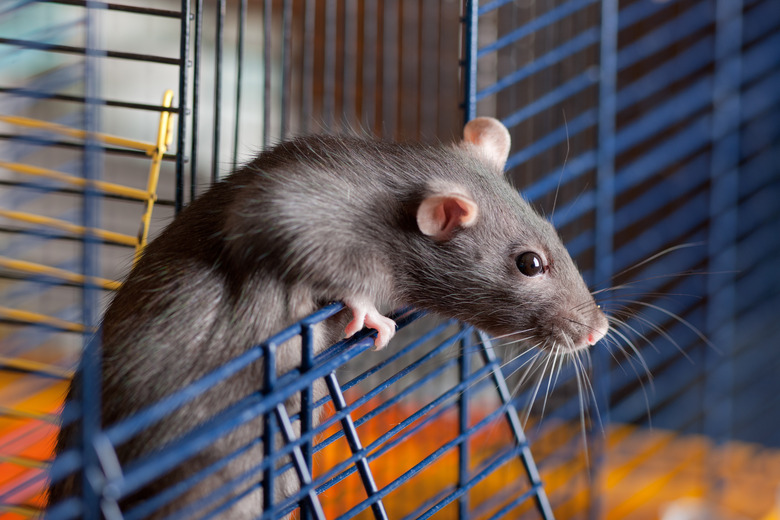The Difference Between Pet Rats & Wild Rats
Nearly all domesticated rats are descendants of wild Norwegian rats (Rattus norvegicus). The domestication of rats started in the 20th century and spawned generations of lovable pets. Wild and domesticated rats have the same body structures and eating habits, but they also have differences in lifestyle and behavior.
TL;DR (Too Long; Didn't Read)
Wild and domesticated rats can look somewhat similar, but they will have some visual differences. They'll also behave differently, especially around humans.
Social Behavior
In the wild, rats are not social creatures. Wild rats tend to run away from humans if they are able to escape. These type of rats only come into the presence of humans if they sense food is nearby. Also, wild rats usually only congregate with other rats for mating purposes. If trapped in corners, rats become extremely hostile and will fight their way out of the corner. On the other end of the spectrum, domesticated rats are friendly towards humans. Domesticated rats and are also social with other domesticated rats. However, domesticated rats will also bite humans if they feel threatened, though this rarely occurs.
Size
Size
Rats naturally grow to lengths of between 11 to 12 inches. In the wild, most rats do not live long enough to reach their full growing potential. Most wild rats peak at 9 to 10 inches. Also, wild rats are more wiry than domesticated rats since they are not constantly fed by humans. The only time wild rats appear large is if they are puffing up their fur (to make them appear larger to predators). Domesticated rats are heavier than wild rats and not as lean. This is largely due to the lack of exercise the rats receive in their controlled environments. Since they have longer life spans, domesticated rats grow up to 11 or 12 inches.
Coloring
Coloring
The coats of domesticated rats vary in color. Many of these rats are brown, but others are tan, beige, gray and black. The different fur colors of domesticated rats are the result of cross-breeding. One popular domesticated rat is the pink-eyed white rat, which has been commonly bred since the 19th century. In the wild, most rats have the same colored fur. Brown and black are the two most common colors for wild rats. Most brown rats have light brown or white fur on their underbellies.
Adaptation
Adaptation
When adapting to an environment of captivity, wild rats are initially frantic since they lack hiding places and are constantly exposed to bright lights. In many cases, wild rates die prematurely or become so stressed that they experience reproductive failure. If they are able to mate, wild rat litters are usually smaller during their first generation of captivity. After 20 generations in captivity, rat litters develop normally. Domesticated rats introduced into the wild struggle with adapting to life in the wild. These rats usually lack the behavioral skills and physical stamina require for wild rats to survive. When domesticated rats survive in the wild, is is usually under human-controlled circumstances.
References
- Rat and Mouse Club of America: Rattus Biologicus – The Domestication of the Rat; Caryl Hilscher-Conklin; July/August 1996
- Rat Help: Wild Vs. Domesticated
- American Fancy Rat and Mouse Association: The Pink-Eyed White Rat; Nichole Royer
- Rat Behavior and Biology: Wild Rats in Captivity and Domestic Rats in the Wild
Cite This Article
MLA
Davis, Skip. "The Difference Between Pet Rats & Wild Rats" sciencing.com, https://www.sciencing.com/difference-between-pet-rats-wild-rats-10052226/. 16 July 2018.
APA
Davis, Skip. (2018, July 16). The Difference Between Pet Rats & Wild Rats. sciencing.com. Retrieved from https://www.sciencing.com/difference-between-pet-rats-wild-rats-10052226/
Chicago
Davis, Skip. The Difference Between Pet Rats & Wild Rats last modified March 24, 2022. https://www.sciencing.com/difference-between-pet-rats-wild-rats-10052226/
